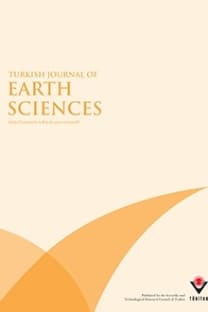Geodynamic Significance of the Early Triassic Karaburun Granitoid (Western Turkey) for the Opening History of Neo-Tethys
The Karaburun Peninsula, which is considered part of the Anatolide-Tauride Block of Turkey, contains clastic and carbonate sequences deposited on the northern margin of Gondwana. The Palaeozoic clastic sequence, which is intruded by the Early Triassic granitoid and tectonically overlies a Mesozoic mélange sequence, can be divided into three subunits: a lower clastic subunit consisting of a sandstone-shale alternation, an upper clastic subunit consisting of black chert-bearing shales, sandstone and conglomerate, and a Permo-Carboniferous carbonate subunit. The lower Triassic Karaburun I-type granitoid has a high initial 87Sr/86Sr ratio (0.709021-0.709168), and low 143Nd/144Nd ratio (0.512004-0.512023) and eNd (-5.34 to -5.70) isotopic values. Geochronological data indicate a crystallization (intrusion) age of 247.1±2.0 Ma (Scythian). Geochemically, the acidic magmatism reflects a subduction-related continental-arc basin tectonic setting, which can be linked to the opening of the northern branch of Neo-Tethys as a continental back-arc rifting basin on the northern margin of Gondwana. This can be related to the closure through southward subduction of the Palaeotethys Ocean beneath Gondwana.
Anahtar Kelimeler:
Karaburun, Neo-Tethys, Palaeo-Tethys, diorite, Triassic, magmatism
Geodynamic Significance of the Early Triassic Karaburun Granitoid (Western Turkey) for the Opening History of Neo-Tethys
The Karaburun Peninsula, which is considered part of the Anatolide-Tauride Block of Turkey, contains clastic and carbonate sequences deposited on the northern margin of Gondwana. The Palaeozoic clastic sequence, which is intruded by the Early Triassic granitoid and tectonically overlies a Mesozoic mélange sequence, can be divided into three subunits: a lower clastic subunit consisting of a sandstone-shale alternation, an upper clastic subunit consisting of black chert-bearing shales, sandstone and conglomerate, and a Permo-Carboniferous carbonate subunit. The lower Triassic Karaburun I-type granitoid has a high initial 87Sr/86Sr ratio (0.709021-0.709168), and low 143Nd/144Nd ratio (0.512004-0.512023) and eNd (-5.34 to -5.70) isotopic values. Geochronological data indicate a crystallization (intrusion) age of 247.1±2.0 Ma (Scythian). Geochemically, the acidic magmatism reflects a subduction-related continental-arc basin tectonic setting, which can be linked to the opening of the northern branch of Neo-Tethys as a continental back-arc rifting basin on the northern margin of Gondwana. This can be related to the closure through southward subduction of the Palaeotethys Ocean beneath Gondwana.
Keywords:
Karaburun, Neo-Tethys, Palaeo-Tethys, diorite, Triassic, magmatism,
- ISSN: 1300-0985
- Yayın Aralığı: Yılda 6 Sayı
- Yayıncı: TÜBİTAK
Sayıdaki Diğer Makaleler
Late-medieval plagioclase-titanaugite-bearing Iron Slags of the Yapraklı Area (Çankırı), Turkey
W.e. Sharp & Steven K. MITTWEDE
Lagrangian Prediction and Correlation Analysis with Eulerian Data
MİNE ÇAĞLAR, Taylan BİLAL, & Leonid İ. PITERBARG
Seda OKAY, Benoit JUPINET, Gilles LERICOLAIS
Biga Yarımadası’nda (KB Anadolu) Yeralan Eklojit ve Mavişistlerin Jeolojisi ve Tektonik Yerleşimi
Firat ŞENGÜN, Erdinç Yiğitbaş & İsmail Onur TUNÇ
Cüneyt AKAL, O. Ersin KORALAY, Osman CANDAN
Geophysical Variations During the Total Solar Eclipse in 2006 in Turkey
Abdullah ATEŞ, Aydin Büyüksaraç & Özcan BEKTAŞ
Geology and tectonic emplacement of eclogite and blueschists, Biga peninsula, northwest Turkey
